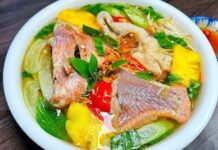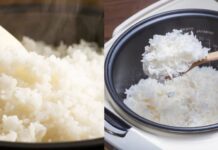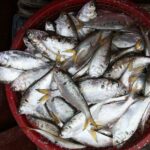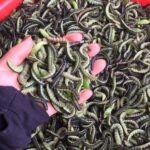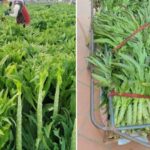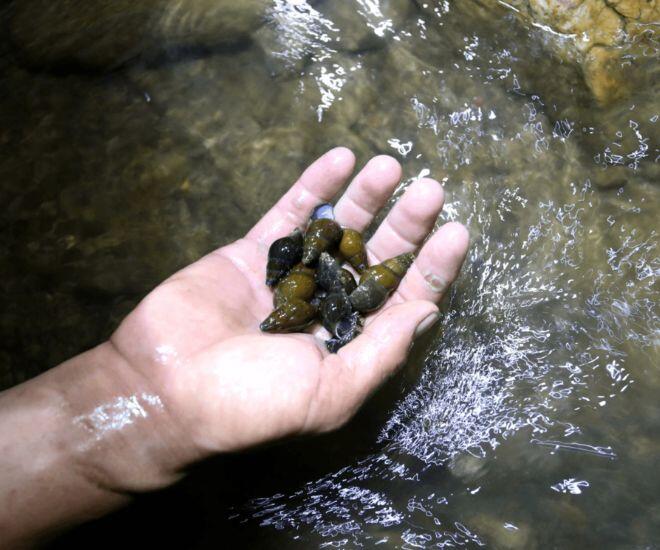
Male snails are a familiar delicacy, inhabiting the streams of Minh Hoa. However, the ideal time to indulge in this specialty is from mid-February to March, when these snails are at their tastiest, most tender, and succulent. For the locals, male snails hold more significance than just a culinary delight. They evoke memories of challenging times when nature bestowed this precious food source, helping them endure scarce seasons.
Today, despite improved living standards, male snails remain a specialty, served to honor esteemed guests, showcasing the host’s hospitality.
On a scorching March noon, as the summer sun blazed, the people of Liêm Hóa in Trung Hóa commune ventured upstream along the Rinh stream, a tributary of the Rào Nan river, in search of male snails. Their equipment was simple: a diving mask and a bamboo basket worn on the chest. Within just 30 seconds of diving, their hands were filled with slender male snails.
Since the beginning of February, the pace of life at Rinh stream has quickened as locals tirelessly engage in snail hunting day after day.
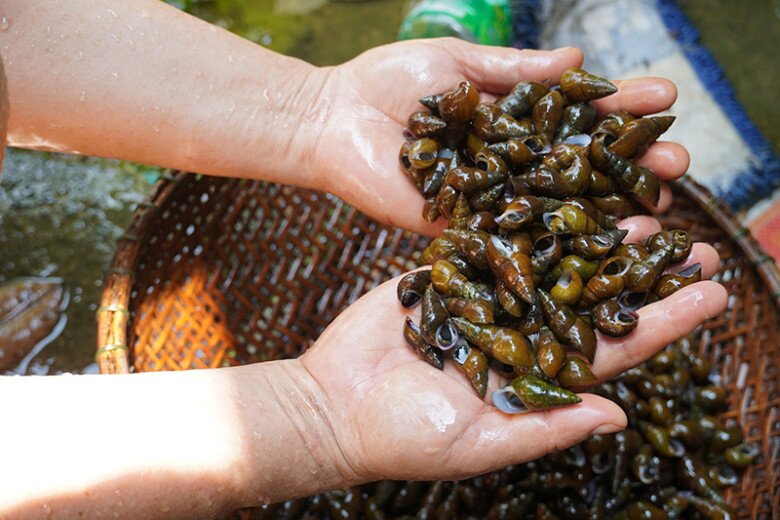
Interestingly, despite most families in Liêm Hóa participating in snail hunting during this season, the supply falls short of meeting the demands of traders. According to locals, male snails are found in many streams in Minh Hóa district, but they are most abundant and delicious in Thượng Hóa, Trọng Hóa, and especially in Trung Hóa. Notably, the male snails from the Rinh stream in Trung Hóa are considered premium, boasting a unique flavor unmatched elsewhere.
This quality distinction prompts connoisseurs and regular traders to directly seek out snail hunters in Minh Hóa, willing to pay higher prices than the market rate. While male snails in the market typically cost around 10,000 to 12,000 VND per can (with 1 kg amounting to approximately 3 cans), Rinh stream snails can fetch up to 15,000 VND per can. This price difference underscores the value and confidence in the quality of snails originating from Minh Hóa’s renowned streams.
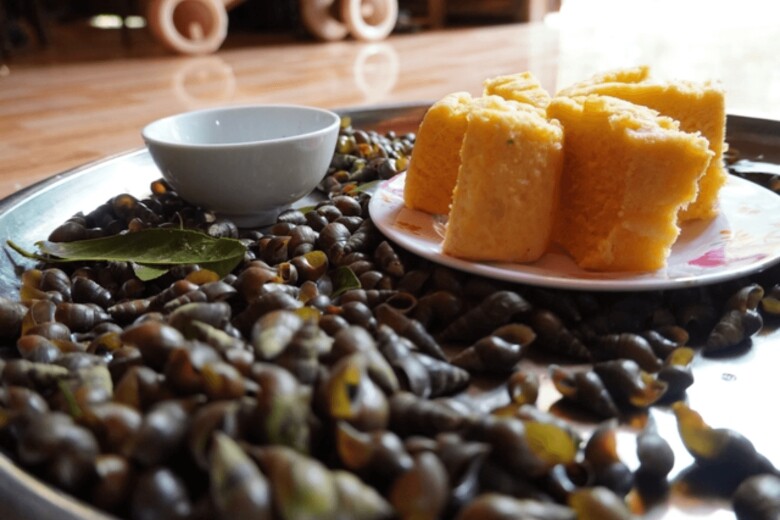
Male snails favor flowing streams, and as such, their capture presents unique challenges. They are typically caught at night when they venture out to feed or during the scorching midday heat when they emerge from the mud to breathe. However, due to various factors, the population of male snails has diminished over time.
To preserve and sustain this natural resource, the people of Minh Hóa have established a convention: snail hunting is limited to a one-month period before the full moon of the third lunar month. This is when the snails are at their best, and after the full moon, they refrain from hunting to allow the snails to enter their reproductive cycle, ensuring a supply for subsequent seasons. This practice reflects the locals’ awareness and love for the “heavenly blessing” that nature has bestowed upon them.
Preparing male snails may seem simple, but it requires subtlety and the cook’s experience to retain their distinctive flavor. Since male snails inhabit flowing streams, cleaning them is relatively easy. Soaking them for about two hours is sufficient to remove all the mud, without the need for complex processes. The most familiar and popular dish made from male snails is boiled snails.
Water is boiled, infused with a few fresh lime leaves for a subtle fragrance, and then the snails are added and stirred continuously. The most critical aspect is timing their doneness perfectly so they can be removed immediately. Overcooking will cause the meat to become tough and lose its natural tenderness and freshness.
The boiled snails’ flavor is elevated by the dipping sauce. It comprises crushed sea salt, fresh chili for a spicy kick, shredded lime leaves, and notably, dổi seeds – a distinctive spice from the mountainous regions, imparting a warm and unforgettable aroma. When the hot plate of boiled snails is served, everyone gathers around the table, using grapefruit or lime thorns to pluck the snails. The tender meat of the snails melts in the mouth, blending with the chili’s spiciness, the fragrant lime leaves, and the warm aroma of dổi seeds, creating an unforgettable culinary experience that lingers in the memory of every diner.
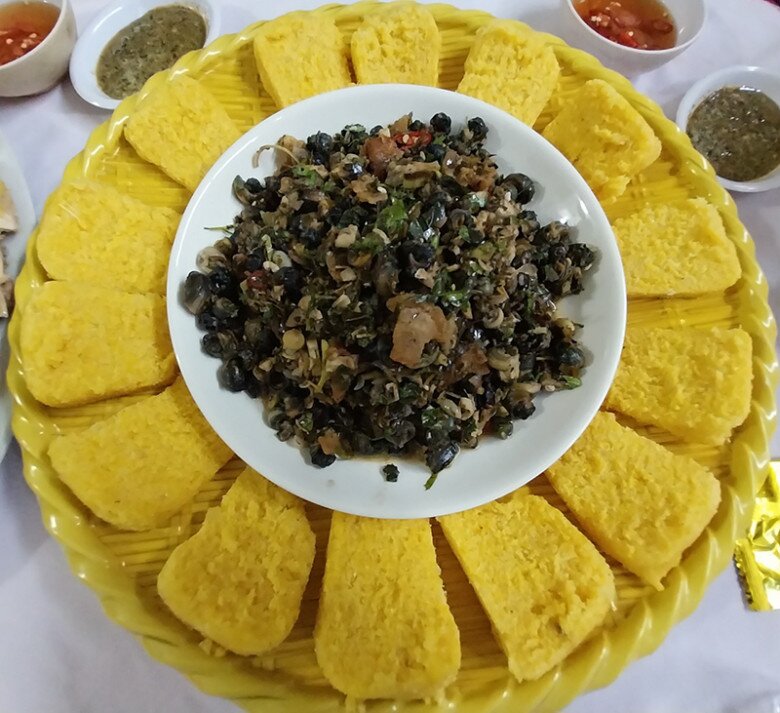
In the rich culinary tapestry of Minh Hóa, male snails are not alone. They are often accompanied by “bồi,” a type of cake made from corn, wheat, rice flour, or a combination of these flours. “Bồi” and male snails have become a perfect pair, shaping the distinct identity of Minh Hóa’s cuisine and finding their way into the region’s folk songs: “Trôông cho mâu tiếng mùa pồi/Nhớ con ôốc tực tang ngồi trên mâm” (Longing for the season of ‘bồi’/Missing the male snails on the plate). This humble folk song captures the locals’ anticipation and love for these symbolic dishes.
Although the lives of Minh Hóa residents have improved significantly compared to difficult times, dishes made from male snails remain a staple on the full-moon day of the third lunar month. To them, male snails are not just food but a part of their traditional culture, a link to the past, and an expression of sincere hospitality when entertaining guests and loved ones. Male snails from Minh Hóa are not merely a delicacy but the soul of a region where traditional values are cherished and preserved through flavors.
Wild Gotu Kola: Unassuming Weed with Amazing Benefits, Now a Modern Delicacy, Sighted and Sought After.
“Purslane, a humble yet powerful vegetable, is a steal when spotted at the market. This underrated green is a nutritional powerhouse, offering an array of health benefits that will leave you wondering why you haven’t been snapping it up all this time. A true superfood, purslane is an affordable and accessible way to boost your health and elevate your culinary creations.”












